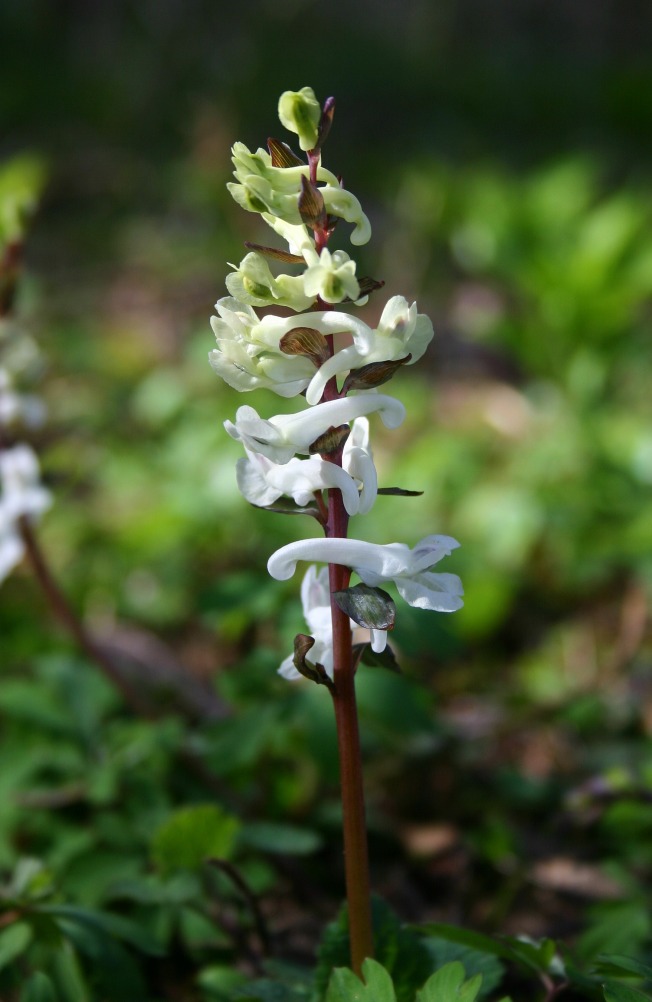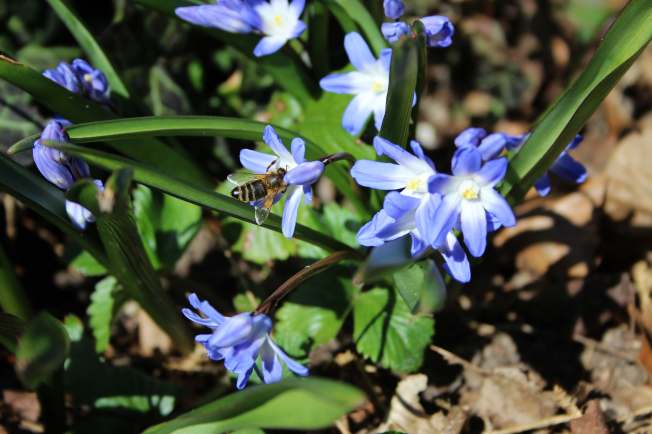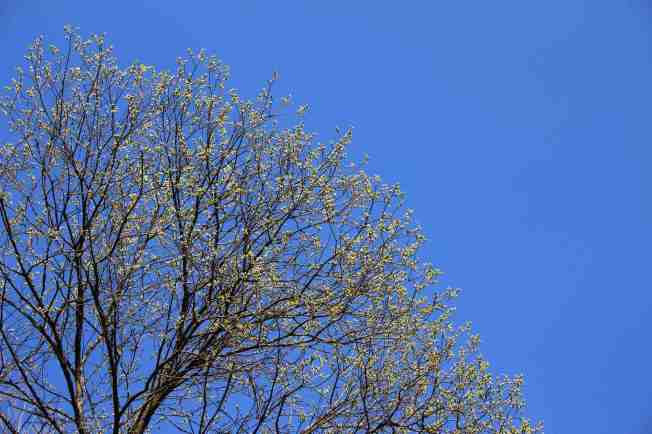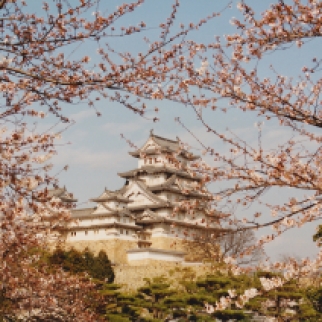I mentioned in a post recently that we have a lot of pollen this spring. (Understatement of the year!) Well, I have since learned that not only has everything flowered at once due to our warm April – the warmest on record since 1881 in Germany – but it is also a so-called mast year for birches, spruce and firs in our region.
A mast year is basically a year when certain types of tree in a whole region produce much more pollen and thus far more seeds than in a normal year. Birches do this regularly – every second year – while other trees such as oak or spruce only do this every 4-8 years.
Trees generally use their energy for putting on growth in non-mast years. But in a mast year something triggers them to put all their strength into preserving themselves and to produce as much seed (and hence pollen in spring) as possible. This can apparently be seen in the rings when a tree is cut, with intermittent rings of very little growth. The trigger may be a warm spring, drought or other factors such as the North Atlantic oscillation. In other words, climate change affects tree ‘behaviour’. But what fascinates me is that, for example, practically every Spruce tree in the whole of Germany has started pumping out the pollen, whether in the far north, the Alps, the Black Forest or the Bavarian Forest. Clever. 😉
Just looking across our valley at the hillsides around us recently it suddenly became clear to me that the Spruce, Firs, and probably many other conifers have joined the birch this year – the trees are gold and brown instead of green, with little fresh growth and millions of flowers and cones forming on their branches. Perhaps you can see what I mean from this photo taken yesterday where the conifers are all much darker than the fresh deciduous trees in full leaf…
In fact, when I walked around the garden and took a closer look I could see our Norway Spruce, Douglas Fir, Silver Fir, Austrian Pine and other conifers I cannot identify are all going mad this spring!
One article I read quoted a botanist suggesting the conifers are suffering from several dry years in a row, and this is a self-preservation measure should they die. A grim thought. While looking for more information on this phenomena I found myself engulfed in the technical jargon of meteorologists and botanists. But it was interesting to find out just why we are experiencing so much pollen this spring!
Have you ever heard of mast years or experienced the same where you live?








































